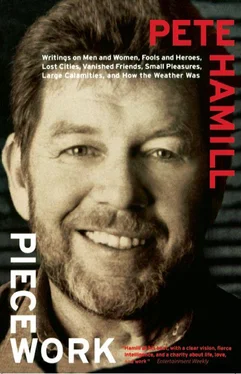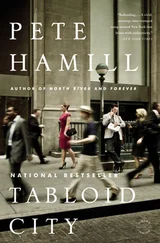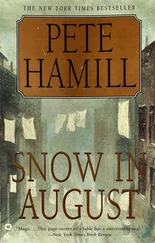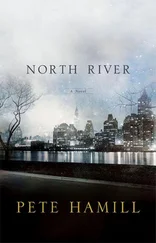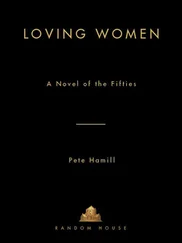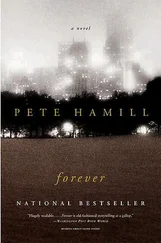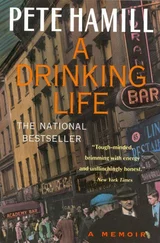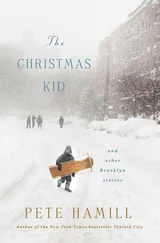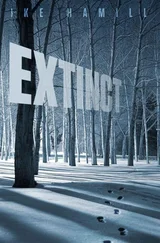Pete Hamill - Piecework
Здесь есть возможность читать онлайн «Pete Hamill - Piecework» весь текст электронной книги совершенно бесплатно (целиком полную версию без сокращений). В некоторых случаях можно слушать аудио, скачать через торрент в формате fb2 и присутствует краткое содержание. Год выпуска: 2009, ISBN: 2009, Издательство: Little, Brown and Company, Жанр: Современная проза, Публицистика, на английском языке. Описание произведения, (предисловие) а так же отзывы посетителей доступны на портале библиотеки ЛибКат.
- Название:Piecework
- Автор:
- Издательство:Little, Brown and Company
- Жанр:
- Год:2009
- ISBN:9780316082952
- Рейтинг книги:5 / 5. Голосов: 1
-
Избранное:Добавить в избранное
- Отзывы:
-
Ваша оценка:
- 100
- 1
- 2
- 3
- 4
- 5
Piecework: краткое содержание, описание и аннотация
Предлагаем к чтению аннотацию, описание, краткое содержание или предисловие (зависит от того, что написал сам автор книги «Piecework»). Если вы не нашли необходимую информацию о книге — напишите в комментариях, мы постараемся отыскать её.
offers sharp commentary on diverse subjects, such as American immigration policy toward Mexico, Mike Tyson, television, crack, Northern Ireland and Octavio Paz.
Piecework — читать онлайн бесплатно полную книгу (весь текст) целиком
Ниже представлен текст книги, разбитый по страницам. Система сохранения места последней прочитанной страницы, позволяет с удобством читать онлайн бесплатно книгу «Piecework», без необходимости каждый раз заново искать на чём Вы остановились. Поставьте закладку, и сможете в любой момент перейти на страницу, на которой закончили чтение.
Интервал:
Закладка:
After 1965, when I started writing a newspaper column, I was freed from the tyranny of an impossible objectivity. The facts were still the core of the work, of course, but in the column form I was able to express my feelings or ideas about those facts. From the beginning, the form felt natural to me; I was like a musician who had found at last the instrument that was right for him. My earliest columns echoed with the voices of those who came before me, from Murray Kempton and Jimmy Cannon to Robert Ruark and West-brook Pegler; I watched carefully what my friend Jimmy Breslin was doing at the New York Herald Tribune, where he was inventing a new kind of newspaper column. In my early work, I can see the marks that all of them put on me. But I was writing too much, too quickly, to imitate any of them slavishly. For all writers, newspaper work is a valuable shortcut to finding style; its pressures force the writer to do what works most naturally.
In finding my own language, or style, the keys were tone and rhythm. The tone was a matter of understanding the story and being open to its essence; presented with the brayings of some obvious political fraud, the tone was mocking; witnessing some urban calamity, the tone was infused with a sense of tragedy. I thought of the process as “hearing the music.” The rhythm of that music was inseparable from the tone. For one kind of story, simple declarative sentences, as blunt as axes, were best; for others, it was necessary to use longer lines, more complicated rhythms. The style was itself a form of comment or explanation.
I used everything I knew to express, or refine, both rhythm and tone. When I was a teenager, I wanted for a brief season to be a jazz drummer. In an old issue of Down Beat, I read an interview with Gene Krupa, one of the stars of the Benny Goodman band, and he was asked a smart question: Since the drummer was the metronome of the band, how did he keep time? What served as his metronome? Krupa answered that he kept chanting to himself one simple phrase: “lyonnaise potatoes and some pork chops.” He would drag the word “lyonnaise” and emphasize the “some” to insure that the beat wouldn’t become too mechanical. So in those first years, I often sat at a Royal Standard typewriter in the city room, writing about some fire or homicide or snowstorm, all the while humming under my breath, “lyyyyy-oh-naise-p’taytas an’ some pork chops, yeah — lyy-yyy-oh-naise-p’taytas an’ some pork chops,” keeping time with my right foot, as if using a pedal on a bass drum. I wanted that rhythm in the sentences. I wanted to add some gaudy word to serve for a splash on the cymbals. Even now, when a deadline is crashing upon me, I chant Krupa’s mantra.
Over three decades, I’ve written newspaper and magazine columns for the New York Post, the Village Voice, the New York Daily News, New York Newsday, Esquire, and New York, along with freelance articles for these and other periodicals. In a way, these columns and articles make up a kind of public diary, a recording of where I was and what I saw and who I met along the way. In a meandering, unplanned way, they’re about one American writer grappling with the meaning of the public events of his time: Vietnam and Watergate, riots, assassinations, scandals, murders, political betrayals. During the period covered by this collection, I chose my own subjects. Usually I thought of them myself; sometimes suggestions for pieces came from editors, but as a freelancer I was, of course, free to decline.
Many pieces originated in my personal history; when I wrote about New York or Mexico or Ireland, I brought to those pieces the kinds of knowledge that didn’t always exist in books. Memory, myth, lore: all had their uses. But at other times, I often chose subjects about which I knew nothing. My ignorance would then force me to learn, to engage in a crash course of books, clippings, reporting. Gradually, I began to make connections among a variety of subjects; a civil rights story about Martin Luther King and Stokely Carmichael could also be informed by a knowledge of Faulkner and the blues. A murder at a good address might be written better with a knowledge of investment banking, real estate dealings, or the novels of Louis Auchincloss. I might more clearly understand the latest homegrown fascist if I knew about volkische nationalism, the history of Sparta, or the drawings of George Grosz. Specialization had no attraction for me; it would be like spending a life painting only roses. I wanted to be, and am, a generalist.
As a young man, my ambition was to embrace those general qualities that Ernest Hemingway, a former newspaperman, once said should be present in all good books: “the good and the bad, the ecstasy, the remorse and sorrow, the people and the places and how the weather was.” That ambition was amazingly presumptuous, of course, and in some obvious ways, comic. No tabloid newspaperman would ever admit to an editor (or anyone else) that he was looking for “the ecstasy, the remorse and sorrow” in the streets of New York or believed he could fit them into 700 words. But as callow as I was, that scrap of Hemingway rhetoric did help me to understand that even fragments could serve a larger purpose. His words were not inconsistent with what gradually became a more modest ambition: to understand the way the world worked and how I fit into it.
These pieces are products of that ambition. In each of them, I first wanted to know something about a person, a place, an event, or an idea. I wanted to hear their music. Then I wanted to pass on what Fd learned to others. Looking at many of them for the first time since they were written, I remembered who I was when I wrote them, the houses I inhabited, the people I loved, my large stupidities and small triumphs, and yes, how the weather was.
PETE HAMILL, 1995
PART I
THE CITIES OF NEW YORK
If I’d grown up in another city, I almost certainly would have become another kind of writer. Or I might not have become a writer at all. But I grew up in New York in the 1940s, when New York was a great big optimistic town. The war was over and the Great Depression was a permanent part of the past; now we would all begin to live. To a kid (and to millions of adults) everything seemed possible. If you wanted to be a scientist or a left-fielder for the Dodgers, a lawyer or a drummer with Count Basie: well, why not? This was New York. You could even be an artist. Or a writer.
As a man and a writer, I’ve been cursed by the memory of that New York. Across five decades, I saw the city change and its optimism wane. The factories began closing in the late 1950s, moving to the South, or driven out of business by changing styles or tastes or means of production. When the factories died, so did more than a million manufacturing jobs. Those vanished jobs had allowed thousands of men like my father (an Irish immigrant with an eighth-grade education) to raise families in the richest city on earth. They eagerly joined unions. They proudly voted for the Democratic ticket. They put paychecks on kitchen tables, asked their kids if they’d finished their homework, went off to night games at the Polo Grounds or Ebbets Field, and were able to walk in the world with pride. Then the great change happened. The manufacturing jobs were replaced with service work. Or with welfare. One statistic tells the story: In 1955, there were 150,000 New Yorkers on welfare; in 1995, there were 1.3 million.
With the jobs gone, the combined American plagues of drugs and guns came to the neighborhoods. New York wasn’t the only American city to be so mauled; but because it was at once larger and more anonymous, a sense of danger bordering on paranoia became a constant in the lives of its citizens. This wasn’t a mere perception; it could be measured. Throughout the 1950s, New York averaged 300 murders a year; by 1994, the city fathers were ecstatic when the number of homicides dropped to 1,600 after years hovering around the 2,000 mark. In my time, even the poorest New Yorkers learned to triple-lock their doors and bar the windows against the relentless presence of the city’s 200,000 heroin addicts. The middle class (children of all those factory workers) began to hire private cops to patrol their streets. They avoided subways late at night. They paid for parking lots to protect their cars against the patrolling junkies. They bought very large dogs. After a while, they stopped sending their kids to the public schools, which had begun adding metal detectors to their doors. Finally, many of them began to move away.
Читать дальшеИнтервал:
Закладка:
Похожие книги на «Piecework»
Представляем Вашему вниманию похожие книги на «Piecework» списком для выбора. Мы отобрали схожую по названию и смыслу литературу в надежде предоставить читателям больше вариантов отыскать новые, интересные, ещё непрочитанные произведения.
Обсуждение, отзывы о книге «Piecework» и просто собственные мнения читателей. Оставьте ваши комментарии, напишите, что Вы думаете о произведении, его смысле или главных героях. Укажите что конкретно понравилось, а что нет, и почему Вы так считаете.
